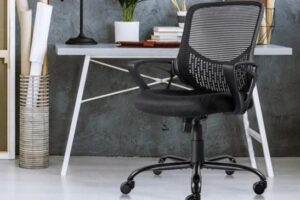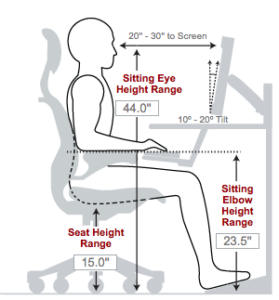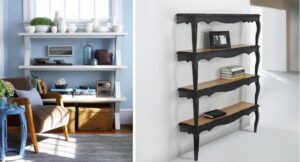There is a desk, a door, a chair, kids running over, the constant rambling of neighbours, the rattling of vessels and I am sitting in one corner of the house thinking if it was better to be in the office working for hours together thinking of being at home. Or is it better here at home missing my workstation and its silence?
There is always a retrospection, offices were made considering _ lighting, ventilation, ambient atmosphere, a place for two people, a place for eight people. On the other side, homes were designed for eating, sleeping, storing, relaxing. I am wondering if these norms are changing? In 2010 when I was an Architect fresher we had offices with NO OFFICE TIMINGS (or they were just numbers) endless laborious working hours. But soon after it went on to a trend of alternate weekends off to five days a week, this was much better and productive we had our “me time” chilling. Then in 2015 the ever trending Co-working spaces came and I had thought this was definitely the way ahead, you could bring your home to office _ pet-friendly, comfortable, easy-going, free, open workspaces (mostly long working hours). Here I am now in 2020 being at home and working for the office, Wondering this is definitely the way ahead and the condition is not changing any soon.
According to the Airtasker study, telecommuters “worked 1.4 more days every month or 16.8 more days every year” than people who worked in an office. They are happy due to less travelling and timely meals. Does it hold true? Is this analysis for metro cities?
As I have been working for longer hours not able to maintain the healthy work-home balance which I had earlier.
To help beat the blues here are a few ways to make working from home more exciting and less miserable.
A. Enlist your requirements. Know what exactly you want on your working desk
- How much laptop or working space do you require?
- What storage do you need?
- What are your Internet requirements?
- Do you require a quiet and calm place away from noise and disruption within the home?
- How much of your time is spent on the phone and are you going to disturb others?
- Do you require access to a library of books or samples?
- Are you untidy, and should your clutter be left untouched by other people in the house?
- Do you have more of a sitting work?
- What is the light and ventilation you require?
B. Invest in Office furniture and pick a good chair
Choosing the best desk and furniture for your home workstation will involve considering how much space you have available in the room. The desktop needs to be big enough to accommodate your laptop or computer while giving you space to take notes. A right height of the working table is ideally of the dining table. But one would not want to spread their worksheets all over. Try to have channels or clips to declutter your desk of wires.
Invest in the chair as it is the one that makes you sit upright and maintain the posture, which stops you lying on your bed and working. It’s best to buy an Ergonomically tested chair. Ideally buy a chair which has net and back support for better ventilation and that extra push to your back.
Have footrests, ergonomic mouse instruments shaped to fit your hand and soft keyboard pads that allow rest and relaxation for the wrist, and footrests. The goal is to make work comfortable for your body and to support the form of humans.
C. Find your own corner
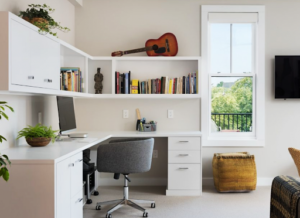 The location of the office within the house should be such that it is neither too isolated nor too public so that one can strike a balance between work and play. You can use your bedrooms or dining spaces or spare rooms to have your own corner. Prefer to have a door to your space to isolate yourself in hard-working hours. In smaller houses, you can also try spaces in the living room where you can spill over a bit.
The location of the office within the house should be such that it is neither too isolated nor too public so that one can strike a balance between work and play. You can use your bedrooms or dining spaces or spare rooms to have your own corner. Prefer to have a door to your space to isolate yourself in hard-working hours. In smaller houses, you can also try spaces in the living room where you can spill over a bit.
Have a window to peep. It gives a breakout space for change from the routine. Allow the natural light to fall on your desk.
D. Be organized and have a noticeboard –KEEP IT MINIMAL
Have specific spaces for each product like books, files, printers, wifi points. Managing wire is the most important, the decluttered spaces are more inviting and convenient to manage. Choose new storage closets or shelves or redo the existing old ones to add the vibe.
Make room for office accessories such as printer, pens, desk essentials. Think about whether you want these neatly packed away, or within easy reach on a worktop. Few immediate access items can be kept in the reach.
Have noticeboard to pinup important upcoming stuff to keep you on, go and add it with a clock to make you stay on time, It can help you to start and stop at the required time to maintain the work-home balance.
E. Have good lighting and some music and smells
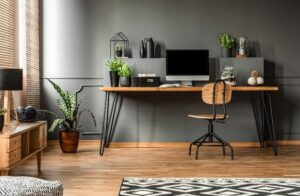 Evoke your senses with the lights and sounds. Natural ventilation, airy spaces and appropriate light fixtures promote functionality and efficiency. For lighting, there are three kinds of Lights – Task Lights (LED white lights), Mood lights and Ambient lights (for evenings). Position your desk close to the window to benefit from as much daylight as possible. Avoid glare when working on Desktops. Have ambient lights for the evening.
Evoke your senses with the lights and sounds. Natural ventilation, airy spaces and appropriate light fixtures promote functionality and efficiency. For lighting, there are three kinds of Lights – Task Lights (LED white lights), Mood lights and Ambient lights (for evenings). Position your desk close to the window to benefit from as much daylight as possible. Avoid glare when working on Desktops. Have ambient lights for the evening.
Lift your mood with light music and some scented room fresheners or natural flowers changing the mechanical colour palette of your space.
F. Bring in the greens and have your own aesthetics reflected
Add your own elements like paintings, quotes, accent colours, mats or pots. Introduce small succulent table greens to change and complement the colours. Greens, browns, Yellows, Aqua and blues are the most trending bright highlight tones to motivate you. It can make the space warm and welcoming.
G. Don’t let your current space discourage you
The current pandemic conditions demand the WFH culture and are likely to stay longer. Don’t get discouraged and find yourself a small creative space if not large. Hallways and landings that are often thought of as being unusable can actually be a perfect place to create a small home office. Explore yourself and find your vibe.
Written by
Anagha Joshi
Architect, Urban Designer
LAB A+U STUDIO


